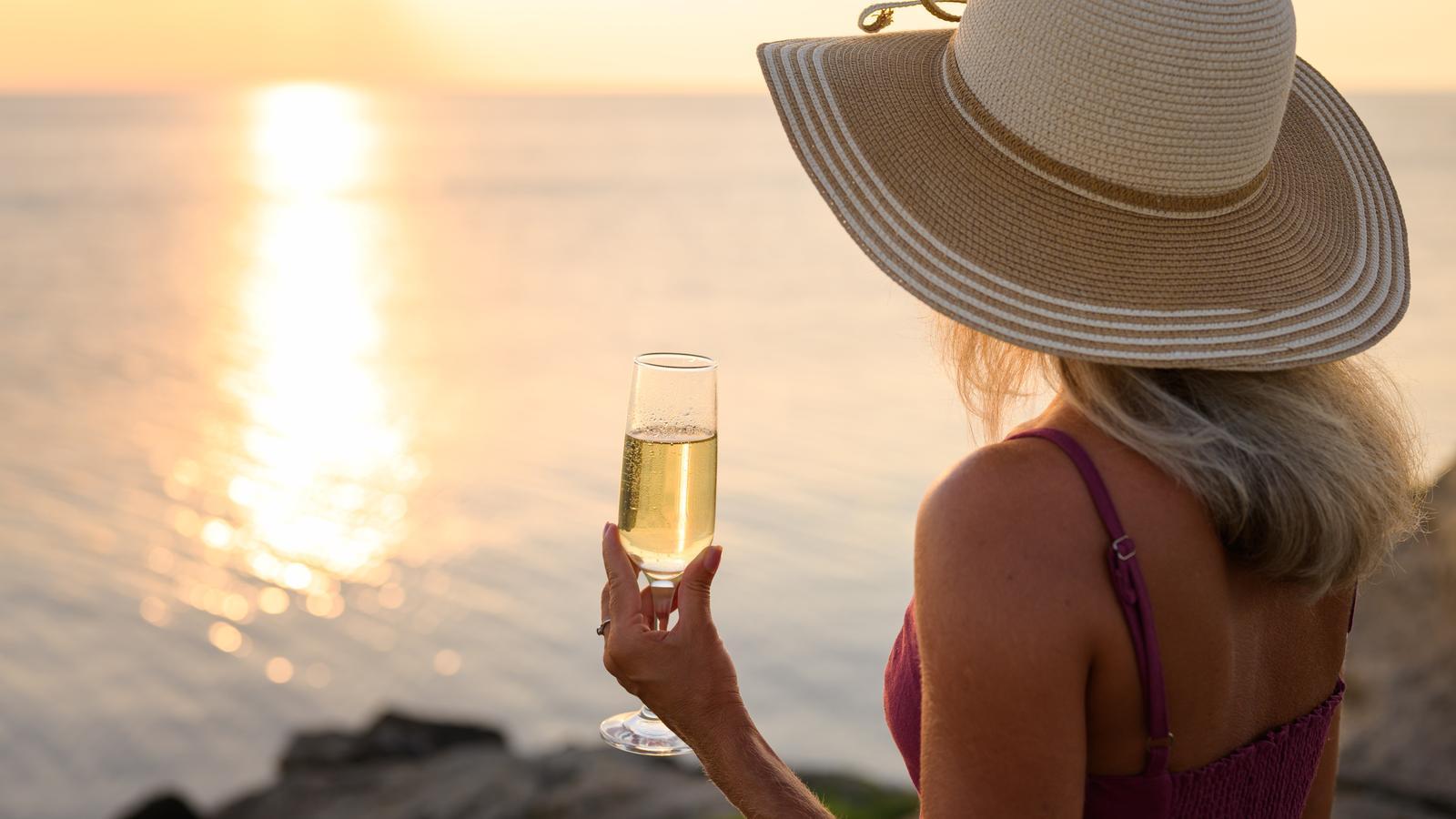The summer heat passes with bubbles
Sparkling wine consumption increases during the warmer months and also in the last months of the year, and there are chefs like Nandu Jubany who make signature sangrias.


If water is the drink that quenches thirst, and science says so, sparkling wine makers add that bubbles also help with that. Milestones for sparkling wines.
Thus, bubbles continue to be consumed seasonally in our country, in the summer and at Christmas. During the rest of the year, especially in the cold months of January and February, the joy of feeling the boom The consumption of sparkling wines decreases due to opening the cork and drinking it. "For high-end products, we can't distinguish consumption by month of the year, because they are sold consistently throughout the year," says Ton Mata, winemaker at the Recaredo winery. Meanwhile, Toni de la Rosa, from the Torelló winery, states that "50% of sparkling wine sales are concentrated in the last quarter." This fact doesn't mean that the winter months, when Catalonia seems to have nothing to celebrate with sparkling wines, are bad for wineries, because they have another outlet: exports.
On summer nights in June and July, the wineries grouped under the Corpinnat brand celebrated the Corpinnat Festival for the fifth consecutive year, which consists of outdoor dinners at the wineries with renowned chefs. A video meeting was held to host a dinner at the Recaredo winery that summer to encourage the consumption of sparkling wine and food prepared by restaurants. European Union Corpinnat Today, five years later, the dinners fill the venues weeks in advance, and it can be said that the pleasant temperatures of summer nights encourage the consumption of sparkling wine. Meanwhile, the chefs, who move their kitchens to the winery for a day, bring their dishes to the table. downstairs. These are nights when everyone is working. with Marc Ribas' cuisineEster Cardús, a sixth-generation Llopart winemaker, claimed that bubbly consumption pointed to a deseasonalization, that is, consumption outside of specific dates. "It used to be Christmas, but high temperatures and, above all, the public's search for cool drinks has meant that bubbly is now drunk year-round," she said. This theory is corroborated by other winemakers, who link bubbly consumption with a preference for white wine over red.
The pendulum swings of fashion
The freshness of white and sparkling wines is what consumers are looking for, as they think that well-aged red wines are difficult to swallow. However, this theory could lead one to believe that, on the contrary, white and sparkling wines are young and lacking in complexity. "That's not the case because long-aged sparkling wines are very fresh," says Cardús of the Llopart winery, which is also the case with white wines.
On this point, the Danish winemaker Peter Sisseck claims that the current trend of drinking fresh wines and sparkling wines is just that, a trend."In the wine world, there are always pendulum swings that go from one side to the other; so there will come a time when the pendulum will swing back toward red wines," says the biodynamic winemaker, who makes wines in Ribera del Duero and Bordeaux. The same goes for alcohol-free wines, which he also interprets as a trend that will pass, but this topic is a different story, and today is summer and we're talking about bubbles.
To understand the summer passion for bubbly, there's another factor that could shed light: consumption by the glass. More and more bars and restaurants are offering sparkling wines by the glass, sparkling wines with a low alcohol content. "At Llopart, we make Brante wine, with bubbles and a 10% alcohol content. It's a pearly red Xarel lo wine, with which we think we can appeal to young people," says Ester Cardús. The chef Nandu Jubany serves in the restaurants Can Carlitos or Es Còdol Foradat Signature sangrias, he calls them that, sparkling. We associate sangrias with drinks for indiscreet tourists, and we've been rejecting them and perhaps even forgetting them. As you present them on the menu, because his sangrias with sparkling wines are signature. And good.
Finally, despite these increases in summer sparkling wine consumption, according to the International Organisation of Vine and Wine (OIV), alcohol consumption decreased during 2024, as it had in the previous two years. There are many theories that specialists offer to explain the phenomenon, and among others, there is a generation that seeks a healthy lifestyle, with low alcohol consumption. Hence, many wineries have embarked on the path of producing other low-alcohol beverages, such as kombutxa tea (the Alta Alella winery, from the DO Cava, and also Vall Llach, from the DOQ Priorat), beers (also the case with the Alta Alella winery), and other beverages, such as the brante wine from the Llopart winery. These are new times for the world of bubbly, which will undergo further changes in the coming years.
Cava sangria (for 6 people)
- 1 bottle of brut nature sparkling wine
- 1 lemon, thinly sliced
- 1 ripe peach, diced 50 ml light liqueur (such as peach schnapps)
- 2 tablespoons of cane sugar (optional; no need to add it)
- Mint leaves
- Cubes
Place the ingredients in this order, mix them with a long spoon, and serve in glasses.
